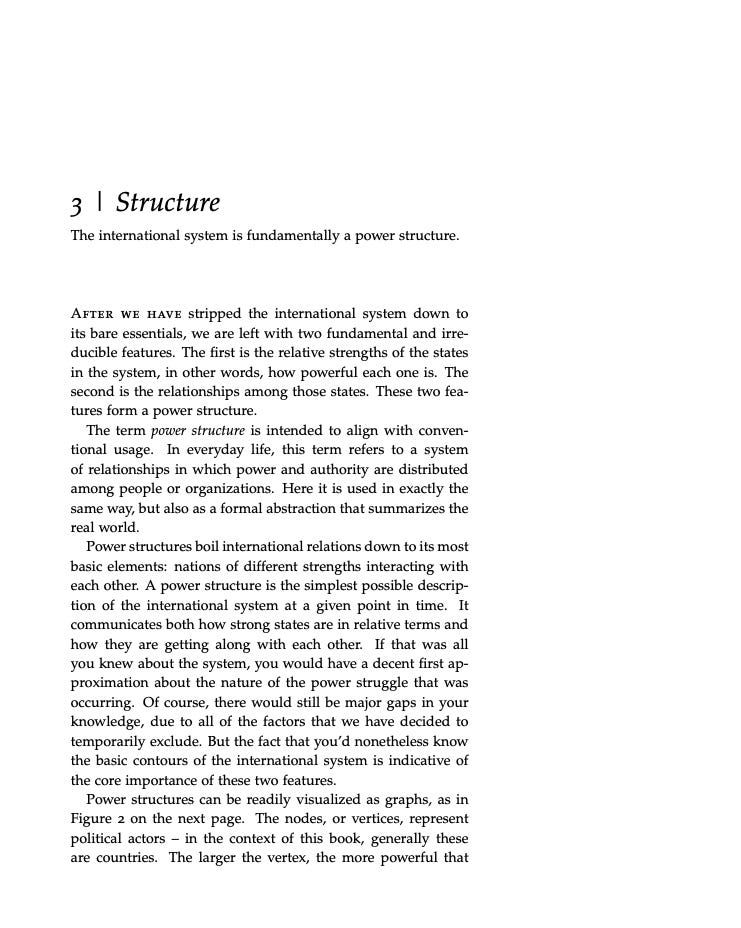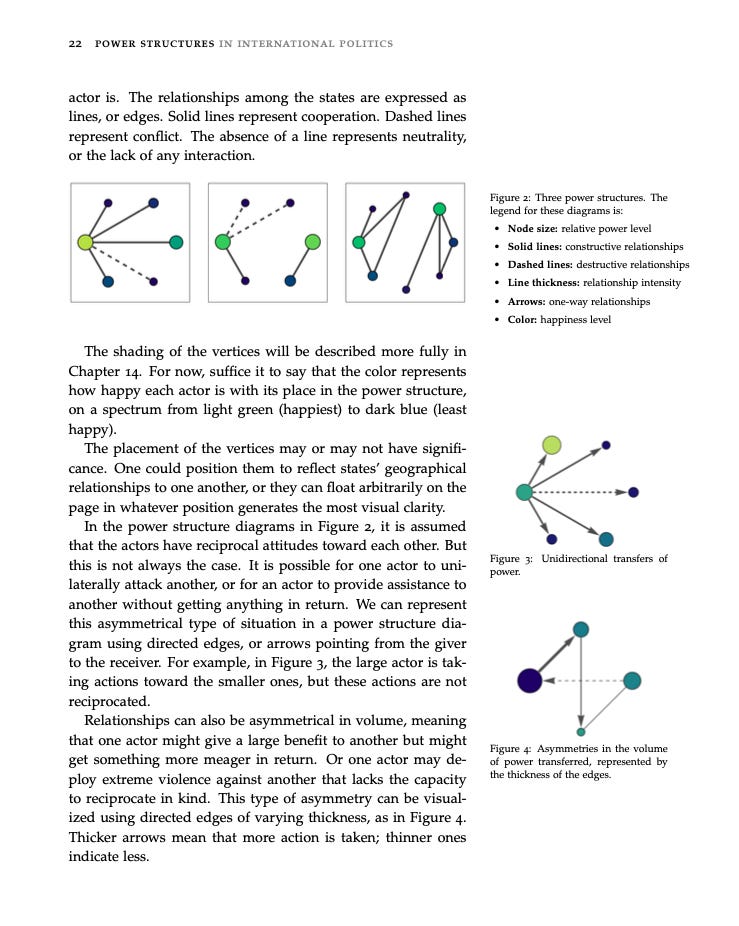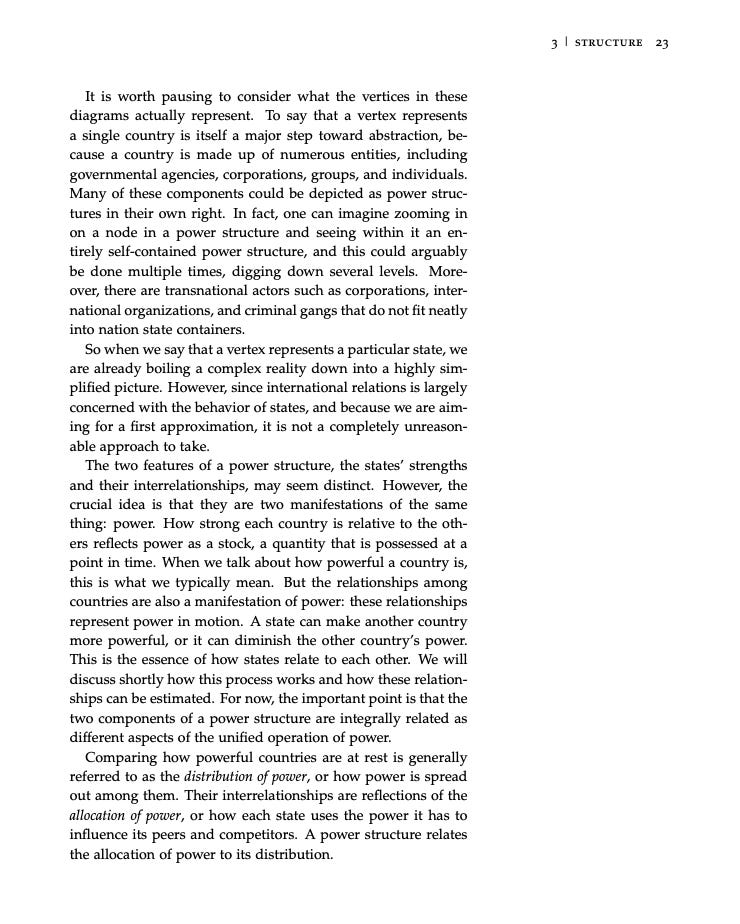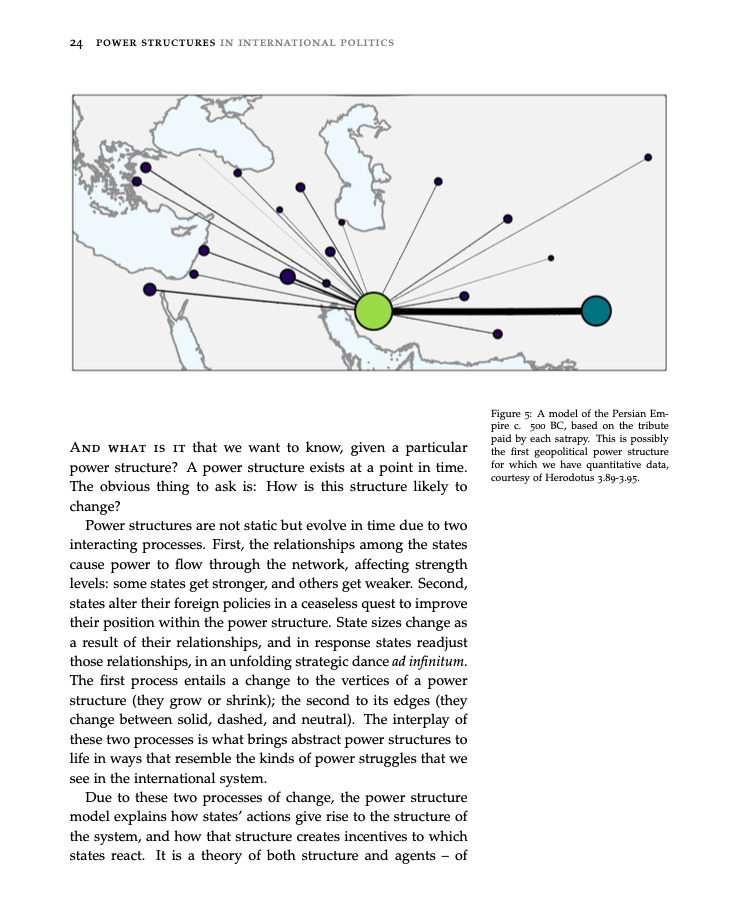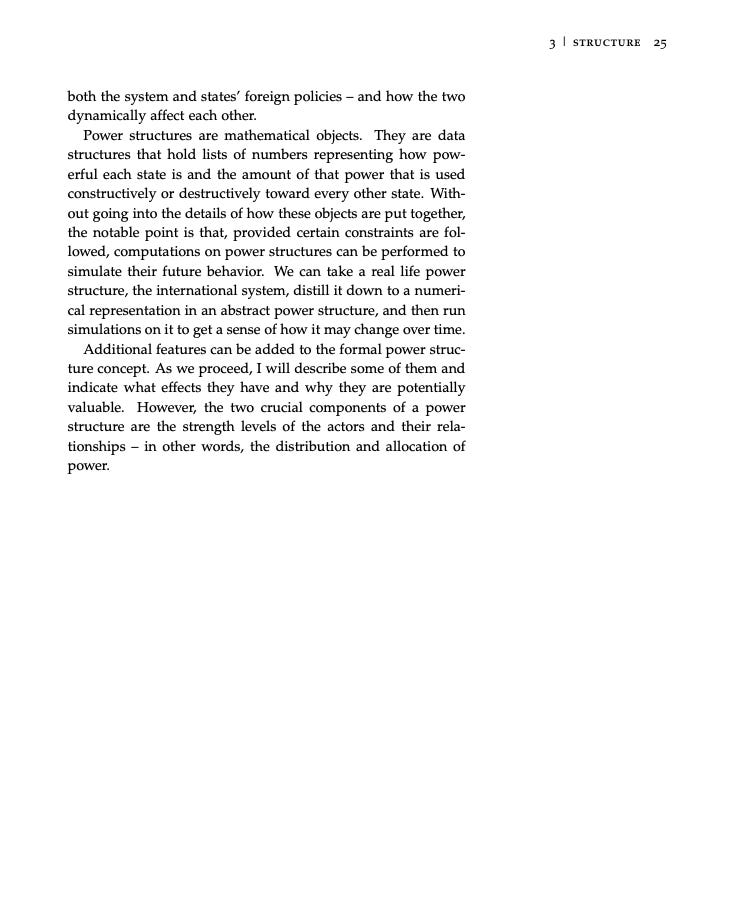What is a Power Structure?
A system of relationships in which power is distributed among political actors.
This newsletter is about political power structures, so I want to level set and explain what they are. In ordinary usage, the term refers to a system of relationships in which power and authority are distributed among people or organizations. States in the international system form a power structure. Institutions within a country form a power structure. The network of individuals within a company or organization forms a power structure.
This is an intuitive concept that taps into a kind of animal awareness that we all possess. Each of us has a sense that some individuals and institutions in the world around us have more power than others, even if we can’t define exactly what power is and even if there’s sometimes debate about who has more of it in a given situation. We also tend to be aware of who is allies with whom, who’s in conflict with whom, and who’s a neutral party. This consciousness serves as our natural radar for perceiving power structures — and for grasping, navigating, and sometimes surviving politics itself.
Power structures are constantly changing. Some actors get stronger; others fall down. Relationships sometimes flip: friends become enemies, enemies become friends, and new parties enter the fray and shift the balance of power. Actors are continually adapting to the “shape” of these relationships and power levels, to avoid being exploited or, unfortunately in some cases, to exploit others.
Power structures matter because we are intertwined in them and our place within them determines many of the outcomes that we experience in life. We are vested in their dynamics: at work, in the politics of our home countries, and in the fate of our nation within the competitive international system. Whether our “team” rises or falls often depends upon where we fit into the wider network, the social dynamics that are happening within it, and who has our back.
Lurking underneath this natural sense of power structures and the colloquial meaning of the term is something more precise. A few years ago, I realized that power structures could be defined quantitatively, plotted visually as graphs, and simulated using computers. To share this idea and the insights that follow from it, in 2023 I wrote a book called Power Structures in International Politics. (I’m in the process of revising it now.)
Below is a chapter from the book that explains this precise definition of a power structure. It does so in the context of international politics, since that’s the theme of the book. But the notion is more general and power structures can be found in a variety of situations that we would describe as political, many of which I’ll discuss future posts.


